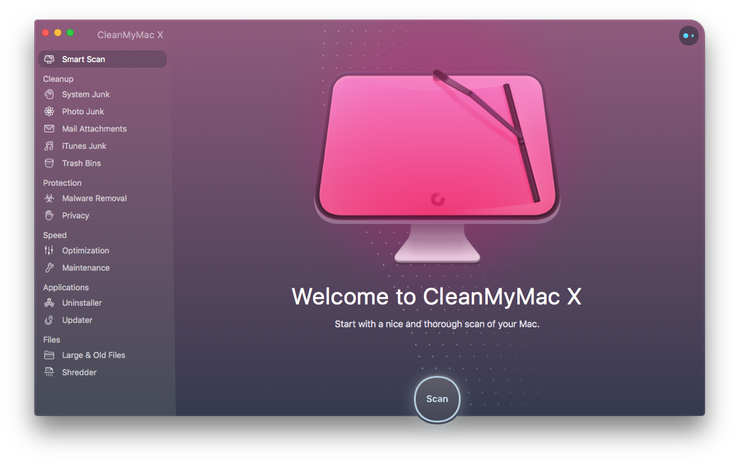Mac Library Updates
This article is intended for system administrators. If you need help with background downloads on your personal Mac, learn how to manage your automatic download preferences for macOS.
- Explore the world of Mac. Check out MacBook Pro, iMac Pro, MacBook Air, iMac, and more. Visit the Apple site to learn, buy, and get support.
- Help library. Find helpful information about your LG product. Search a keyword or select a product category and then pick a topic. Type in keyword and then search. Predictive search layer window is open. Contents Product. There are no related contents. Close See More. Your Recent Searches.
- Can I delete /Library/Updates on EI Capitan. Ask Question. I found /Library/Updates is used to store system updates file which have not been applied.
You can set your App Store preferences to “Download newly available updates in the background”. If you're using OS X El Capitan v10.11.5 or later, these updates include major new macOS versions, like macOS Sierra. Your Mac then notifies you when the updates are ready to install.
May 30, 2019 Despite the fact that Apple keeps the Mac Library folder hidden from users, it’s good to learn how to show the Library folder on Mac. You may need to access the Library folder when you need to clear cache, remove the app’s leftovers, edit preference files manually, etc. BeatBuddy Manager v 1.6.4.1 (Mac) and v1.6.5 (PC) July 27, 2016. Download For PC. Download For Mac. WATCH TUTORIAL. Auto-update: Improvements/bug fixes/etc we make in the future will automatically be applied. MIDI Editor: It is in its beta stages, so we recommend using it only for simple tasks. Anything complex requiring a MIDI editor, we suggest using a 3rd party MIDI editor.
If your enterprise is concerned with data usage or network bandwidth, you should turn off background downloads.
Use a configuration profile
You can use a configuration profile to prevent background downloads. In the profile, set the AutomaticDownload key to False in the com.apple.SoftwareUpdate domain. Learn more about creating configuration profiles.
Use a Terminal command
If you’re a system administrator and need to make this update on multiple computers, run the following command in Terminal as an admin user:
How to get updates for macOS Mojave or later
If you've upgraded to macOS Mojave or later, follow these steps to keep it up to date:
- Choose System Preferences from the Apple menu , then click Software Update to check for updates.
- If any updates are available, click the Update Now button to install them. Or click ”More info” to see details about each update and select specific updates to install.
- When Software Update says that your Mac is up to date, the installed version of macOS and all of its apps are also up to date. That includes Safari, iTunes, Books, Messages, Mail, Calendar, Photos, and FaceTime.
To find updates for iMovie, Garageband, Pages, Numbers, Keynote, and other apps that were downloaded separately from the App Store, open the App Store on your Mac, then click the Updates tab.
To automatically install macOS updates in the future, including apps that were downloaded separately from the App Store, select ”Automatically keep my Mac up to date.” Your Mac will notify you when updates require it to restart, so you can always choose to install those later.
Permanently Unhide the Library Menu Option On MacYou can permanently unhide the Library Menu Option in the top-menu bar on your Mac by using the Terminal Command. How do i empty my photo library on my mac.
How to get updates for earlier macOS versions
If you're using an earlier macOS, such as macOS High Sierra, Sierra, El Capitan, or earlier,* follow these steps to keep it up to date:
Open the /Library folder, set to List View. How do i open my library preferences on my mac account. /Library is where all your apps store their prefs, how you want them to work for you.It would generally be unwise to start playing in there without being certain of what you are doing.That said, some apps can store large cache files in there, others may be folders for apps you long-since deleted - those would be safe candidates.70GB is a pretty big lib, btw, mine is only 30GB & I'm a heavy user.I'd still be very, very careful in there, but maybe try something like to see what the largest users are. (There's another similar tool I can't right now remember the name of. If someone remembers & drops it in comments, that would be very nice)Another way to hone down the largest users would be. Hit Cmd/J for View Options & set to 'Calculate all sizes' this may take a while.
- Open the App Store app on your Mac.
- Click Updates in the App Store toolbar.
- Use the Update buttons to download and install any updates listed.
- When the App Store shows no more updates, the installed version of macOS and all of its apps are up to date. That includes Safari, iTunes, iBooks, Messages, Mail, Calendar, Photos, and FaceTime. Later versions may be available by upgrading your macOS.
To automatically download updates in the future, choose Apple menu > System Preferences, click App Store, then select ”Download newly available updates in the background.” Your Mac will notify you when updates are ready to install.
Mcmaster Library

* If you're using OS X Lion or Snow Leopard, get OS X updates by choosing Apple menu > Software Update.
How to get updates for iOS
Learn how to update your iPhone, iPad, or iPod touch to the latest version of iOS.

Mac Library Updates Download
Learn more
Mcminnville Library
- Learn how to upgrade to the latest version of macOS.
- Find out which macOS your Mac is using.
- You can redownload apps that you previously downloaded from the App Store.
- Your Mac doesn't automatically download large updates when it's using a Personal Hotspot.